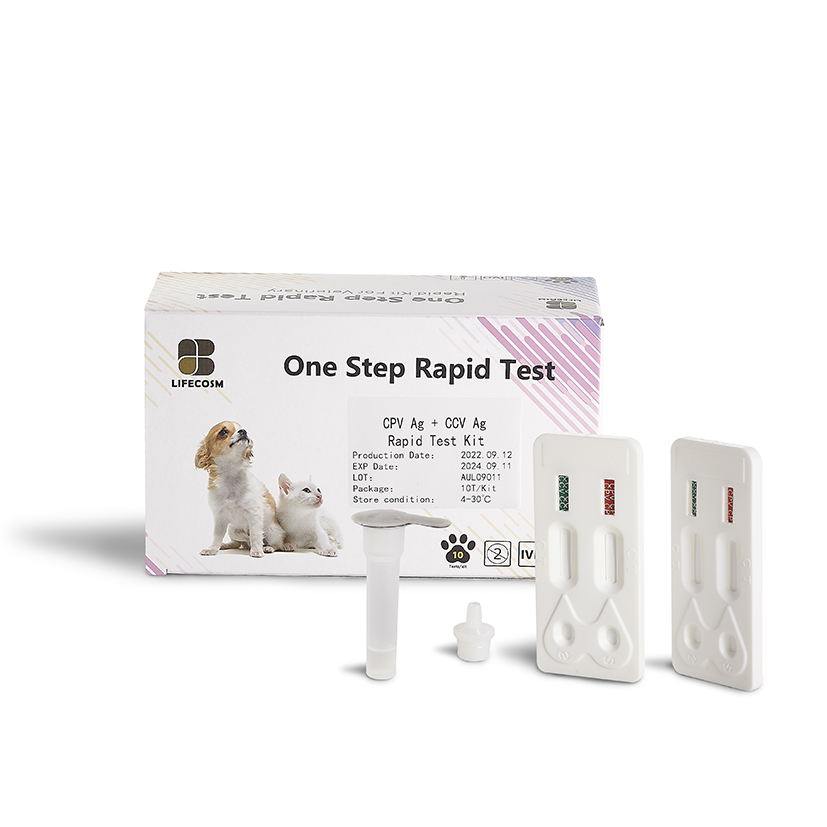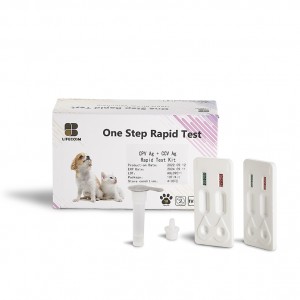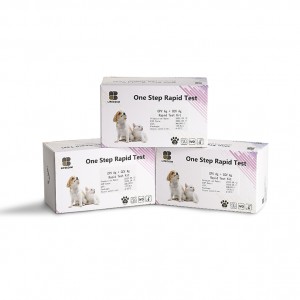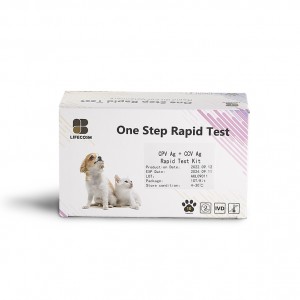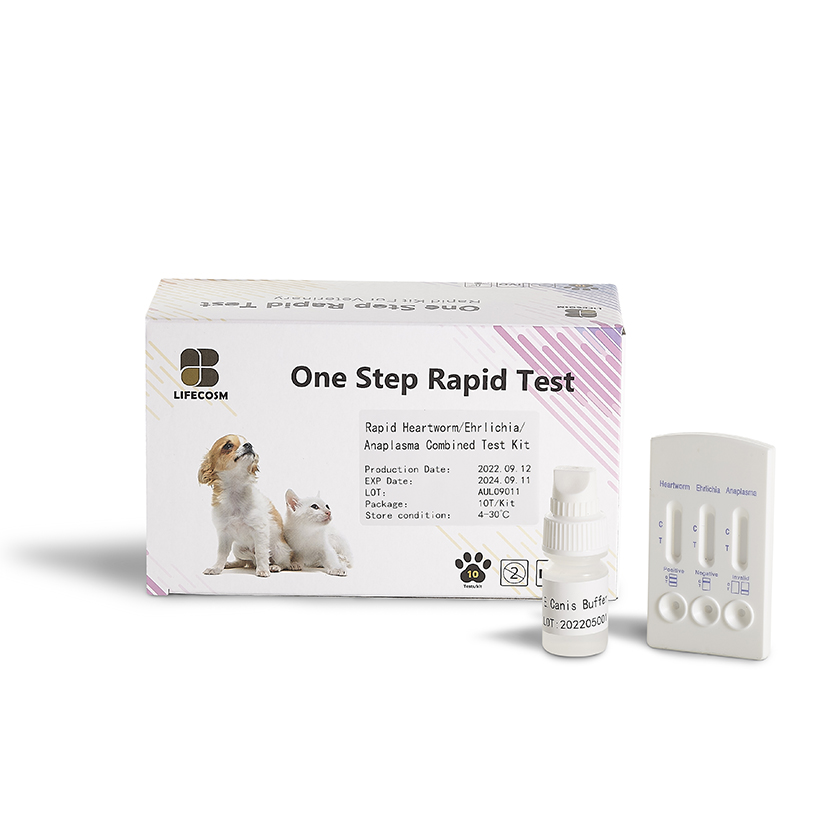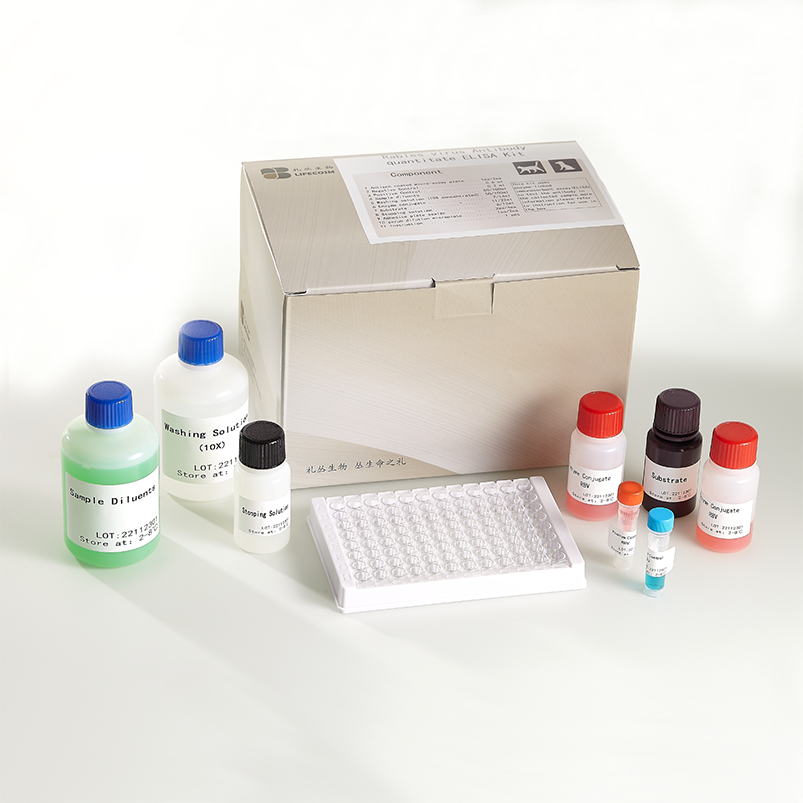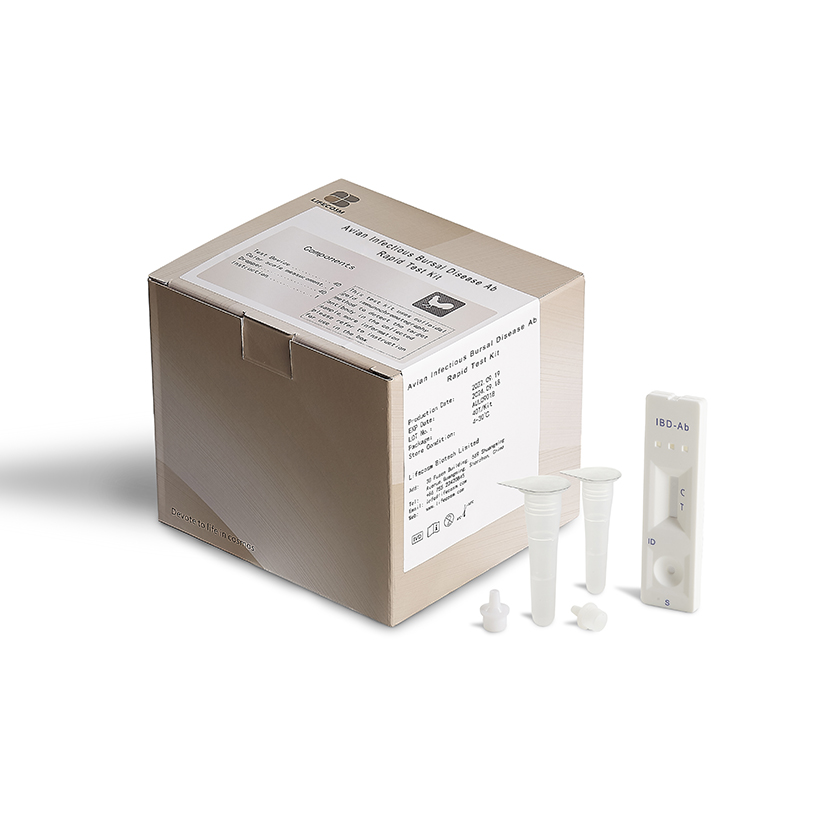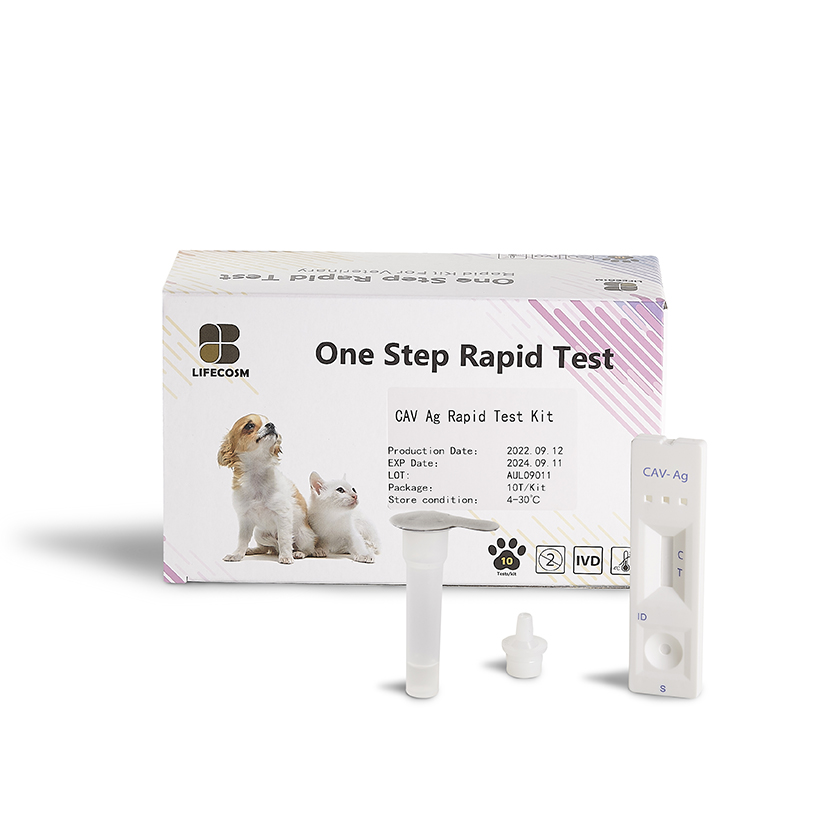
Products
Lifecosm Canine Coronavirus Ag/Canine Parvovirus Ag Test Kit to test dog CPV and CCV
CCV Ag/CPV Ag Test Kit
|
Canine Coronavirus Ag/Canine Parvovirus Ag Test Kit |
|
| Catalog number | RC-CF08 |
| Summary | Detection of specific antigens of canine coronavirusand canine parvovirus within 10 minutes |
| Principle | One-step immunochromatographic assay |
| Detection Targets | CCV antigens and CPV antigens |
| Sample | Canine Feces |
| Reading time | 10 ~ 15 minutes |
| Sensitivity | CCV : 95.0 % vs. RT-PCR , CPV : 99.1 % vs. PCR |
| Specificity | CCV : 100.0 % vs. RT-PCR , CPV : 100.0 % vs. PCR |
| Quantity | 1 box (kit) = 10 devices (Individual packing) |
| Contents | Test kit, Buffer bottles, Disposable droppers, and Cotton swabs |
| Caution | Use within 10 minutes after opening Use appropriate amount of sample (0.1 ml of a dropper) Use after 15~30 minutes at RT if they are stored under cold circumstances Consider the test results as invalid after |
Information
Canine parvovirus (CPV) and canine coronavirus (CCV) that are potentially pathogens for enteritis. Although their symptoms are quite the same, their virulence is different. CCV is the second leading viral cause of diarrhea in puppies with canine parvovirus being the leader. Unlike CPV, CCV infections are not generally associated with high death rates. CCV is not new to the canine population. Dual CCV-CPV infections were identified in 15-25% of cases of severe enteritis in the USA. Another study showed that CCV was found in 44% of fatal gastro-enteritis cases that were initially identified as only CPV disease. CCV has been widespread among the canine population for many years. The age of dog is also important. If a disease occurs in puppy, it often leads to death. In mature dog the symptoms are more gentle. The possibility for healing is higher. Puppies less than twelve weeks of age are at the greatest risk and some especially weaker ones will die if exposed and infected. A combined infection leads to a much more severe disease than occurs with either CCV or CPV alone, and is often fatal.
|
Group |
Severity of signs |
Mortality rate |
Recovery rate |
|
CCV |
+ |
0% |
100% |
|
CPV |
+++ |
0% |
100% |
|
CCV + CPV |
+++++ |
89% |
11% |
Symptoms
◆CCV
The primary symptom associated with CCV is diarrhea. As with most infectious diseases, young puppies are more affected than adults. Unlike CPV, vomiting is not common. The diarrhea tends to be less profuse than that associated with CPV infections. The clinical signs of CCV vary from mild and undetectable to severe and fatal. Most common signs include: depression, fever, loss of appetite, vomiting, and diarrhea. The diarrhea can be watery, yellowish-orange in color, bloody, mucoid, and usually has an offensive odor. Sudden death and abortions sometimes occur. The duration of illness can be anywhere from 2-10 days. Although CCV is generally thought of as a milder cause of diarrhea than CPV, there is absolutely no way to differentiate the two without laboratory testing. Both CPV and CCV cause the same appearing diarrhea with an identical odor. The diarrhea associated with CCV usually lasts several days with low mortality. To complicate the diagnosis, many puppies with a severe intestinal upset (enteritis) are affected by both CCV and CPV simultaneously. Mortality rates in puppies simultaneously infected may approach 90 percent.
◆CPV
The first symptoms of the infection include depression, appetite loss, vomiting, severe diarrhea, and the increase in temperature of the rectum. The symptoms occur 5~7 days after infection. The feces of the infected dogs become light or yellowish gray. In some cases, fluid-like feces with blood can be shown. Vomiting and diarrhea causes dehydration. Without treatment, dogs suffering from them can die of fit. Infected dogs usually die 48~72 hours after showing the symptoms. Or, they could recover from the disease without complications.
Treatment
◆CCV
There is no specific treatment for CCV. It is very important to keep the patient, especially puppies, from developing dehydration. Water must be force fed or specially prepared fluids can be administered under the skin (subcutaneously) and/or intravenously to prevent dehydration. Vaccines are available to protect puppies and adults of all ages against CCV. In areas where CCV is prevalent, dogs and puppies should remain current on CCV vaccinations beginning at or about six weeks of age. Sanitation with commercial disinfectants is highly effective and should be practiced in breeding, grooming, kennel housing, and hospital situations
◆CPV
Until now, there are no specific medicines to eliminate all viruses in the infected dogs. Therefore, early treatment is critical in curing infected dogs. The minimization of electrolyte and water loss is helpful for preventing dehydration. Vomiting and diarrhea should be controlled and antibiotics should be injected into the sick dogs to avoid second infection. More importantly, a close attention should be paid to the sick dogs.
Prevention
◆CCV
Avoiding dog to dog contact or contact with objects that are contaminated with the virus prevents infection. Crowding, dirty facilities, grouping large numbers of dogs, and all types of stress make outbreaks of this disease more likely. Enteric coronavirus are moderately stabile in heat acids and disinfectants but not nearly so much as Parvovirus
◆CPV
Regardless of age, all dogs must be vaccinated against CPV. Continuous vaccination is necessary when the immunity of dogs is not known.
Cleaning and sterilization of kennel and its surroundings are very important in preventing the spread of viruses. Be careful that your dogs do not contact the feces of other dogs. In order to avoid the contamination, all feces must be managed properly. This effort should be done with all people participating to maintain the neighborhood clean. In addition, consultation by experts like veterinarians is essential in the prevention of the disease.

